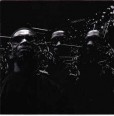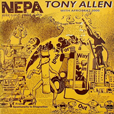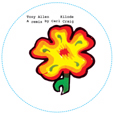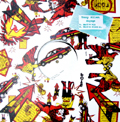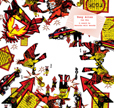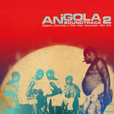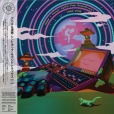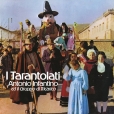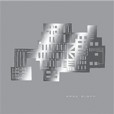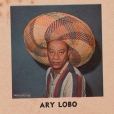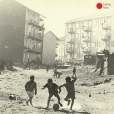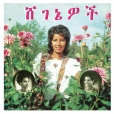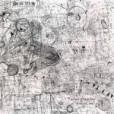Your basket is empty

Musically in-for-the-kill, forward-looking and dubwise; politically scathing. From 1985, when T was living in Harlesden. Aswad horns.
The first of his three Fela-produced solo LPs, from 1975.
Carl Craig back on Honest Jon’s, in devastating form: nervy and urgent, epic and apocalyptic, kicking and funky. Lagos re-tooled in Detroit.
Paradigmatic yet forward-looking township jazz from 1975.
Braiding Wes Montgomery into marabi, the legendary guitarist leads a stellar line-up of musicians including Kippie Moeketsi, Barney Rachabane, Gilbert Matthews, Dennis Mpale, and Sipho Gumede.
The opener glances sideways at the commercial success of Abdullah Ibrahim’s recent Mannenberg — but the real magic follows on, when the players cut loose in their own, new directions.
This is the first vinyl reissue. Sleevenotes by Kwanele Sosibo feature interviews with key musicians, and previously unpublished photos.
This mix by Mark Ernestus — one half of the Basic Channel, Maurizio and Rhythm And Sound teams — kicks off our series of reworkings of tracks from Tony Allen’s Lagos No Shaking album.
Like a dream, but authoritatively, this remix from Jamaica magnificently crosses the Afrobeat of Fela Kuti with the grounation reggae tradition of Count Ossie.
‘Elegantly combines the delicacy of classical Arabic music, the raw expressiveness of Egypt’s countryside music, and the spontaneity of free improvisation, carefully obliterating the artificial separation between acoustic and electronic instruments. Despite the remarkable absence of any percussion or drums, The Handover is an extremely groovy band, with an ability to slow down and accelerate the tempo in almost telepathic synchronization at exactly the right moments.
‘Alongside the tight ensemble playing there is plenty of room for individual expression as the oud, synthesizer and violin take turns playing solos on top of repetitive riffs. Native Alexandrian Ayman Asfour plays violin with breathtaking beauty, not afraid to make it buzz, squeak and rattle. Belgian/Norwegian keyboardist Jonas Cambien makes the synthesizer a melodic instrument in its own right, at times evoking almost classical Maqam, at other moments coming straight out of an Egyptian wedding. The oud forms the backbone, as Aly Eissa’s solos guide the listener from minimalist, meditative drones, to a compelling climax, and back to earth.
‘There is much more to The Handover’s sound than the obvious references to Arabic and Egyptian music. The opening drone section of the album is pushed towards abstraction and even noise, and the vintage Farfisa organ gives the music a touch of 70s psychedelic rock. The repetitive riffs can be reminiscent of Embryo’s experiments combining krautrock with influences from the middle-east, but the use of repetition to induce trance dates way back in Egyptian music, and is present in many rituals like Sufi and moulid celebrations. The composed melodies on this album couldn’t be possible without Eissa’s deep love for this music. And what The Handover does with this composed material couldn’t be possible without three strong individual voices, their love to play music together and their dedication to push the traditions forward.’
Startling 1975 excursions into Tarantism — a kind of hysteria ostensibly triggered by spider bites, for which dancing is the only cure, with its own set of cultural traditions based in Basilicata, Apulia, Sicily.
Obsessive, hypnotic chants, rhythms, and drones, mixing together folk, avant-gardism, and psych, with shots of Dylan and North African drumming.
A fresh, engaging compilation, spanning 1978-1988: a decentred, porous map of the Gallic musical scene during the Sono Mondial era, running routes from the suburbs of Paris to and from the French Caribbean Antilles and throughout the African diaspora; and revelling in the new general access to electronic instruments like synthesizers and drum machines.
Superb singing, in Urdu, with reined-in accompaniment by Vijay Iyer on pianos and electronics, Shahzad Ismaily on bass and Moog.
Ary was the most celebrated of those singers and songwriters emerging from Belem do Para in the 1950s, with deep Afro-Brazilian roots. He kick-started the sixties with his best LP Aqui Mora O Ritmo, The Rhythm Is Here. One year later his album Cheguei Na Lua (I Landed On The Moon) revealed his passion for space travelling and for the moon in particular. He released one LP per year till he left RCA in 1966. He made a ton of money and lived notoriously large.
The sleeve-notes of his 1958 debut Forro Con Ary Lobo are quick to nail his accomplishment: ‘An absolute master of Baiao, Coco, Batuque and other related musical genres, and the owner of an art one hundred percent his own, Ary Lobo is the ideal
interpreter of northeastern songs.’
Hotly recommended by our friends Rush Hour in Amsterdam: ‘Starting off with the positively upbeat Umgababa by Kippie Moketsi and the infectious soul jazz of Pat Matshikiza’ s Dreams Are Wonderful (also featuring Kippie Moketsi) proceedings mellow out on side B, only to get extra heavy on the C-side with the sample-ready fusion groover Night Express off their crazy rare 1976 album of the same name and the irresistibly funky Blues for Yusef by Lionel Pillay, two of the many highlights on this action-packed thriller.’
‘Dizzying close harmonies and indestructible grooves on this lost classic from Ethiopia’s Golden Age.
‘Raised in the bustling cosmopolitan milieu of late-empire Addis Ababa, two young women released one single and a full-length LP in 1976, before disappearing from the music business entirely. Originally released on Kaifa, the label responsible for some of the heaviest and funkiest Ethiopian records of all time, Beauties was a hit, selling out in a few days. But it came out at the beginning of two decades of darkness and oppression in Ethiopia, and this is the first full reissue of this overlooked classic.
‘Beauties is at once totally unique and an amalgamation of all that came before it during Ethiopia’s explosive two decades of creativity in the 60s and 70s. Fans of Ethio-jazz will hear Mulatu in the dark, minor-key piano runs, turning in on themselves on songs like Amlak Abet Abet and Metche Neow. Interlocking percussion and rock steady basslines are a signature of the Army Band, which also backed greats like Tlahoun Gesesse and Mahmoud Ahmed. Arranger Teshome Sisay is also an incredible flutist, playing with both sensitivity and swagger on tracks like the majestic Ayinouma.
‘But the vocals are the most stunning part. Aselefech and Getenesh met at the legendary Hager Fikir Theatre in Addis, where centuries-old Ethiopian culture combined with the modern music of the capital’s elite. Trained in traditional music, their dual vocals lead in extremely close harmony, intertwined and infinitely creative in their phrasing.
‘By the time this record was released, the Derg Regime was imposing strict crackdowns on music and artistic expression. Targeted as allies of the deposed Emperor Haille Selassie, the artists (and most musicians) had to keep a low profile. This is one of the last great releases of the Ethiopian Golden Era.’
Startlingly accomplished new jazz from South Africa, teeming with ideas, influences and idioms.
Maybe you remember Asher’s drumming on Angel Bat Dawid’s The Oracle.
Hotly recommended.
